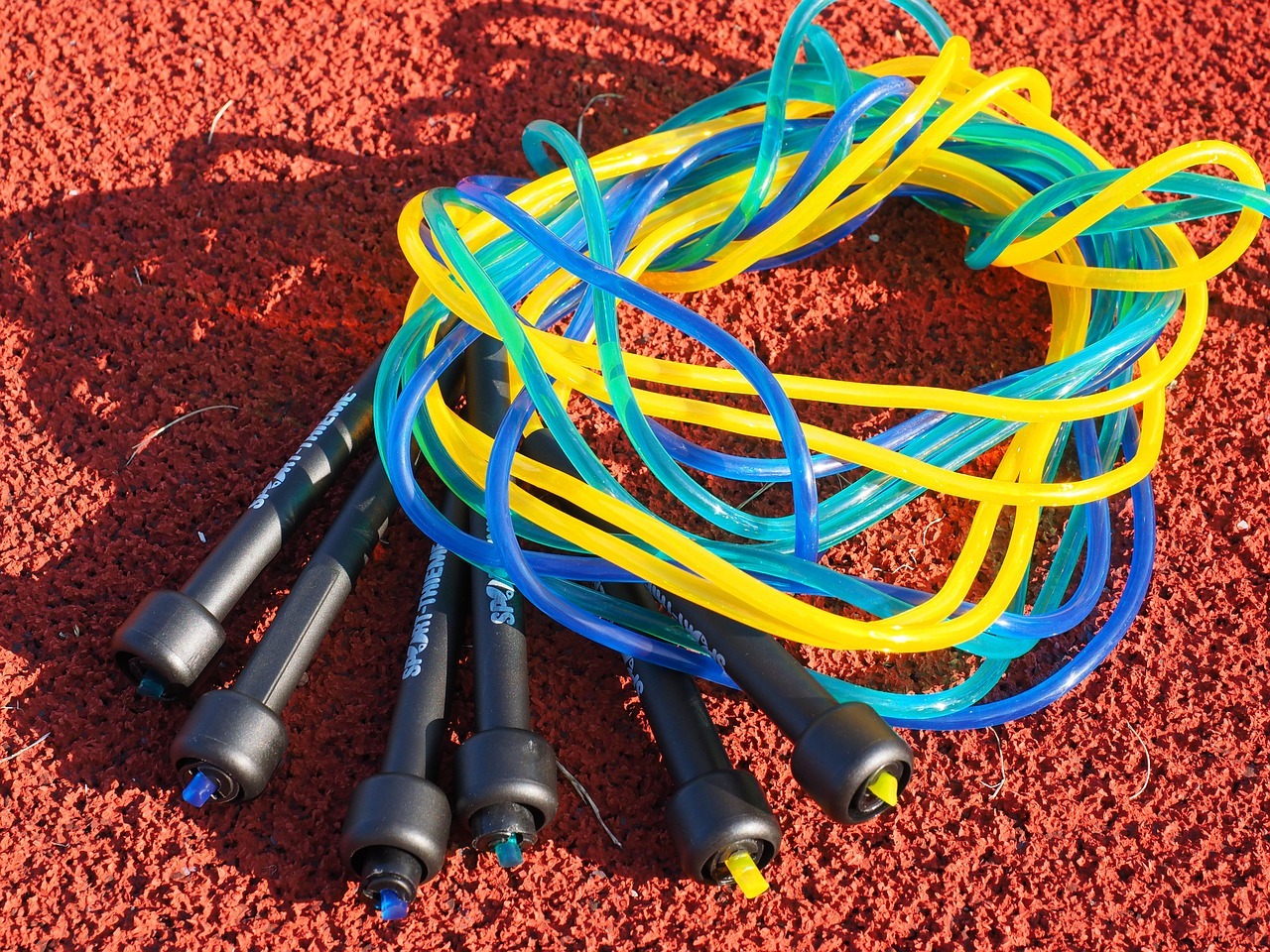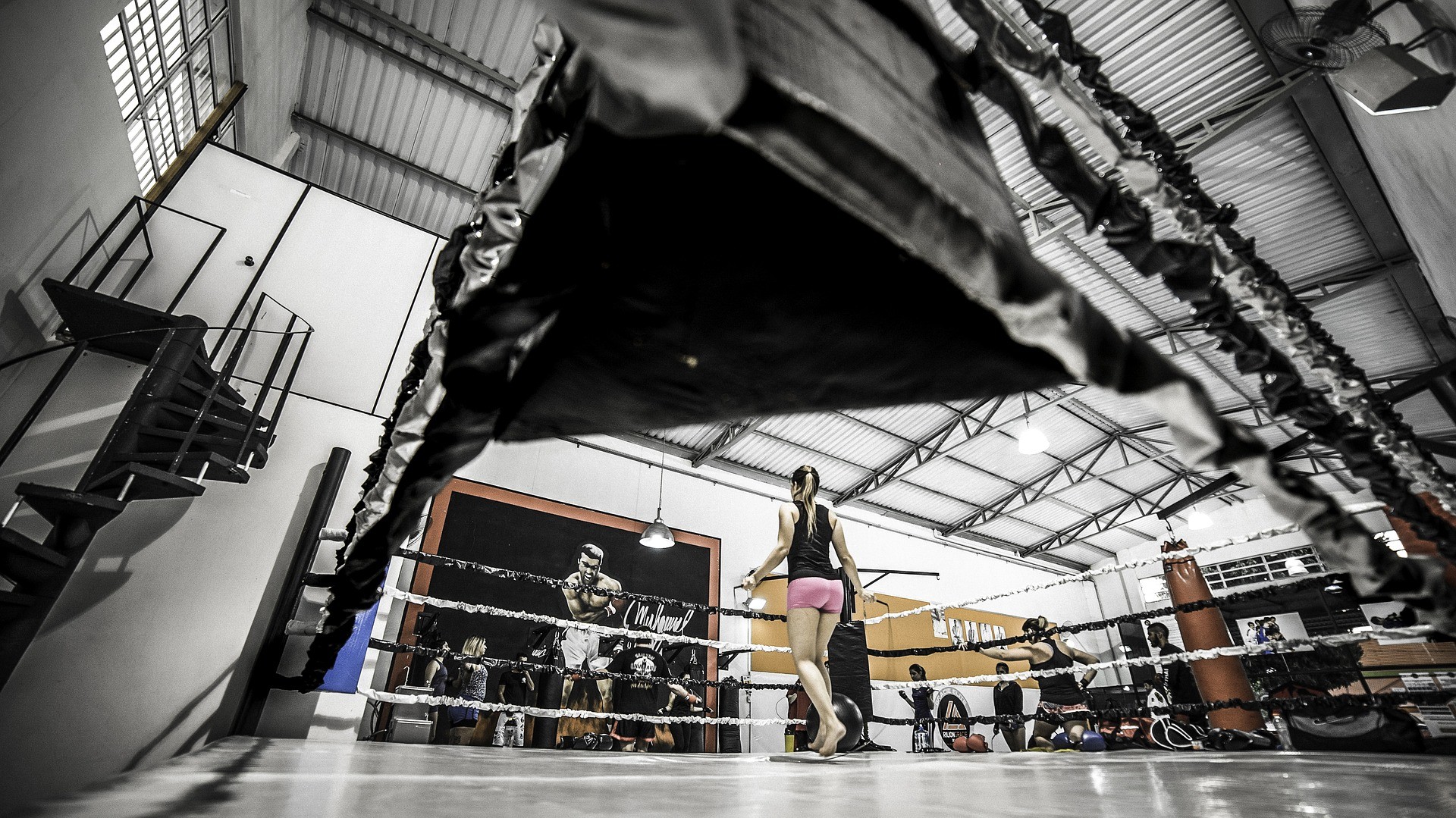
How to Jump Rope Like a Boxer: Practical Guide for Everyone
The jump rope (aka ‘skipping rope’) is one of the most versatile pieces of gym equipment that can be taken and used just about anywhere. When used right, it can improve almost every part of your overall conditioning from increasing your stamina, improving footwork, to helping you burn more calories.
So, now that you’re interested in the benefits gained from this workout, you need to learn how to jump rope like a boxer. It’ll take time, and you’ll probably stumble along the way, but the end results make it worthwhile. To guide you along, we’ve written up simple, yet informative instructions that should get anyone regardless of skill level skipping rope like a pro.
Get the Right Rope
Before you can begin jumping rope like the pros, you need to have the right rope. Just buying the first rope you see won’t cut it.
Variety of ropes
The type of rope you buy depends on whether or not you’re just starting out as well as just simple personal preference. There are adjustable ropes for those looking for more versatility, but most ropes that aren’t adjustable are still sold in various sizes.
Some ropes come with weighted handles; it’s a perfect addition for anyone looking for a challenge in their routine, but it can be difficult if you’re just a beginner. Also, try to look for a 90-degree connection as that can make handling the rope easier.
Material
A material used to make the rope determines much of its spin speed, so pay attention to that when you shop around for one. Thinner, plastic ones tend to be lightweight and have a faster spin speed, while leather-made ropes are heavier and slower. There are some that enjoy leather ropes, but most prefer the plastic ones.
Lenght
Once you’ve decided on a rope, check out its length. Typically, most athletes that are 6ft tall or shorter go for ropes with a length around 9ft. Those who are taller look for rope lengths around 10ft or so.
To determine which length will suit you best and if you need to do any adjustments, you can measure it against yourself. Stand with one foot in the middle of the rope, pull it up, and the cable ends (not the handles) end up around the mid-chest level or right under the armpits. Beginners may choose to look for a taller rope that can be more forgiving.
Generally, try to pick a cable that’s 3ft taller than your height, and you should be safe.
In addition to finding the right jump rope, no matter which one you settle on, don’t look to spend more than $20. One of the greatest benefits of jump rope is that it is one of the most inexpensive pieces of training gear you can buy. Unless you’re looking to perform advanced routines, there’s no need to shell out a lot of cash. You can find a quality rope for under $5.
Master the Basics
Before you can learn how to jump rope like a boxer, you need to learn how to jump rope. It may seem like a laughable step, but you can’t imagine how easy it is to get the basics wrong.
- Posture: It should be a given that you shouldn’t slouch when skipping rope. If you’re hunched over, it’s probably because your rope is too small. That causes poor form, and it can damage what you’re trying to achieve.
- Arms: Keep your arms comfortably bent at the elbows with your hands about a foot to the side and kept at waist-level. When you’re doing basic jumps, you’re mainly using your wrists to spin the rope rather than your arms or your shoulders.
- Feet: Look to land on the balls of your feet rather than on your heels. In fact, your heels should never touch the ground. Jumping up and down softly on the balls of your feet is what gives your calves such a serious workout.
Rythm
When you’re skipping rope, whether you’re going fast or slow, you want to stick to a steady rhythm that’s comfortable for you. Having an appropriate rhythm can make the exercise easier and allows you to develop more advanced skills at a better pace.
Having a rhythm also ensures that you don’t do the dreaded “double bounce”. This is when you do a large jump once over the rope and follow it up with a smaller bounce just to keep rhythm. It’s a common beginner mistake, but all it does is slow you down. If you find yourself doing this, cut the habit as quickly as you can.
More concerning the bounce, don’t try to go for high jumps. This is one of the reasons so many fall into the “double bounce” trap. Small bounces are more efficient at gaining faster jump speeds without using up your energy.
If you want to be sure you’re mastering the basics, practice, and practice often. Preferably, try practicing in front of a mirror so that you can see if your form is correct.
Try New Techniques
If you want to skip rope like boxers, once you nail down the basics, you should move onto trying different techniques with your rope. This may seem a bit daunting at first, but anyone can master them over time.
Try conquering these common ones first before you look into doing anything too advanced:
1. The Boxer Skip (Alternating Step)
This type of jump is one of the first techniques many move onto after doing the traditional skip. All it entails is alternating feet leaving the ground while you jump. You can easily intensify this one once you’re comfortable enough by either going faster or even bringing your knees up.
2. Side-to-Side
For this technique, you can either go right into it, or you can start off doing the traditional skip and then go into it. Either way, it is a style that has you using both feet and jumping from side-to-side. In the beginning, you can start off doing shorter jumps and work your way up to larger, faster jumps.
3. Side Swings
This is another great technique for beginners to learn if you want to be on your way to jumping rope like boxers. All that happens here is that the swinging rope passes the side of your body without you jumping over it. Side swings will help you with speed and coordination without having to jump over the rope, and they can even be used to transition into other types of swings. Also, they can help you regain momentum if you’re tired.
4. Single Foot Hop
As the name implies, this style requires you to hop on one foot continuously before switching to the other. You can perform a few on one leg before switching to the other in the beginning before adding more once you get stronger and more comfortable with this style.
5. Heel-to-Toe
This technique is great for helping you become lighter on your feet as well as improving your coordination. It’s why this is such a common style you’ll see many boxers utilizing in their training. Start with the traditional jump rope style before moving into the heel toe technique. From there, put your heel forward and your toe backward. Your feet should always hit the ground and leave the ground at the same time.
Try not to over-think this technique, and you should be able to master it in no time.
6. Criss-Cross
This is a little more advanced than the previous styles, but once you learn it, you should be on your way to jumping rope like the pros. For this style, you want to have good timing and coordination, so it’s best to master the other fundamentals first before trying this one.
Start with a regular jump. When the rope passes over your head, cross your arms so that your hands are on opposite sides of your hips. Once you complete the jump, uncross your arms before your second jump so that your hands return to the normal position.
Additional Tips
- Remember your breathing. Try to breathe through your nose when jumping. Using that breathing technique steadies your heart rate, keeping you calmer throughout your exercise. Whereas, breathing through your mouth can render you breathless and tire you out quicker.
- Surface matters. The type of surface you jump on will impact your exercise routine. A shock-absorbent surface is ideal; something like a gym mat, wood floor, or even inside a boxing ring at a gym will work. Avoid surfaces like concrete as they can be hard on your feet and ankles.
- Don’t wear your boxing shoes to jump rope. If you’re in the middle of a boxing routine and want to switch over to jump rope, you may be tempted to keep going in those boxing shoes you wore during that sparring match. You can, but it may not be optimal. Consider investing in quality cross-training shoes that have more cushioning to absorb the shock that comes with jumping rope.
- Try different styles without a rope first. This may seem like a strange tip, but it’s a useful one. Those common techniques we listed can be practiced without using a rope first. Do some jumps up and down sans rope to get a feel of the moves first.
- Don’t be afraid to fail. Those pros you see performing all those cool tricks? Trust us: they stumbled and fell dozens of times before they mastered those techniques. That’s why you need to practice often. You’re going to trip up, but that comes with the territory. Push through the frustration, and the reward will be worth it.
Related Posts
Is Aikido effective?
Perfect Muay Thai Clinch – Best Hacks You Should Know
What does OSS (especially in BJJ) mean?
Martial Arts for Fitness: 5 Reasons Why It Works
Boxing Injuries? The Truth About the Dark Side of Boxing
How Much is Boxing Classes – Quick Review
Top 7 Best Martial Arts For Kids
Top 5 Best Adult Martial Arts




